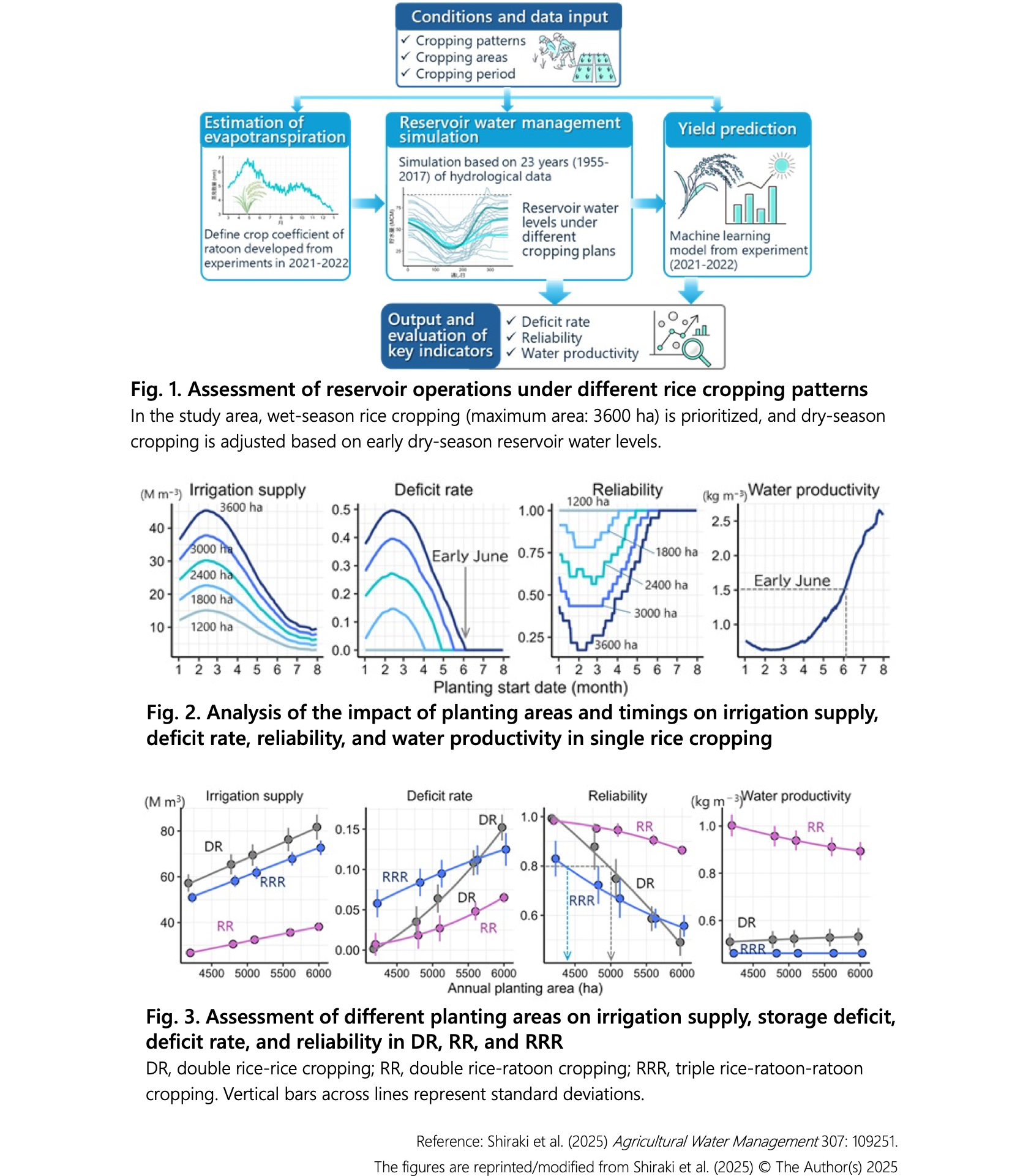Enhancing reservoir water management through ratoon rice double cropping in tropical monsoon regions
Description
Ratoon rice double cropping (RR) offers a resource-efficient alternative to conventional rice double cropping (DR) by eliminating the need for seedling preparation, puddling, and transplanting while also shortening the growth period. In irrigated areas under tropical monsoon climates, its adoption could contribute to stable water resource management. However, its impact on reservoir operations at the irrigation district level remains unverified. This study evaluates the effects of introducing RR on reservoir operations in the Yezin irrigation area of Myanmar, where dry-season water use is restricted due to hydrological variability, and wet-season cropping is prioritized.
This report estimates evapotranspiration for ratoon rice cropping using newly defined crop coefficients. Using 23 years of hydrological data, the reservoir water balance simulation was performed under different cropping patterns, including single, double, and triple cropping scenarios. Key indicators such as water shortage, reliability index (RAI), and water productivity (WP) were assessed. Additionally, rice yields were predicted using a machine learning model developed from 10 cropping trials, with input features such as harvest dates, meteorological data, and cutting heights. WP was calculated using simulated irrigation supply data (Fig. 1). For single rice cropping (3,600 ha in the wet season), early-season planting in early June avoids water shortages while maintaining WP of over 1.5 kg m−3 (Fig. 2). In DR, limiting the dry-season cultivation area to 1,400 ha (total annual cropping area, 5,000 ha) ensures an RAI above 0.8, a threshold for sustainable reservoir operations. In RR, planting in the dry season leads to water shortages that prevent crop continuation. However, when RR begins in the early wet season, an RAI above 0.8 is maintained. Compared to DR, WP improves by 60–87%, enabling more efficient reservoir management. However, for the triple rice-ratoon-ratoon cropping to maintain an RAI above 0.8, planting must be delayed with a cropping area of less than 4,400 ha, resulting in a reduction in WP to 0.45–0.48 kg m−3 (Fig. 3).
The proposed simulation framework enables comprehensive assessment of water shortage risks and WP in irrigated paddy rice under tropical climates. It facilitates the formulation of sustainable cropping and irrigation plans as an adaptation strategy to climate variability. For effective ratoon double cropping, strategies must be implemented to optimize harvesting schedules, avoiding rainfall-induced delays and mitigating yield losses from mechanical harvesting-related stubble compression.
Figure, table
- Research project
- Program name
- KAKEN
- Term of research
-
FY2021-2024
- Responsible researcher
-
Shiraki Shutaro ( Rural Development Division )
Kywae ( Department of Agricultural Research, Myanmar )
Nwe Ni ( Department of Agricultural Research, Myanmar )
Thin Mar Cho ( Department of Agricultural Research, Myanmar )
Aung Kyaw Thu ( Department of Agricultural Research, Myanmar )
- ほか
- Publication, etc.
-
Shiraki et al. (2025) Agric Water Manage.https://doi.org/10.1016/j.agwat.2024.109251
- Japanese PDF
-
2024_A04_ja.pdf1.17 MB
- English PDF
-
2024_A04_en.pdf322.8 KB
* Affiliation at the time of implementation of the study.

